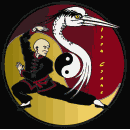
|
The story of James Tille (Now Dr. James Tille (PhD)) is singularly unique among American serviceman who studied overseas. In the 1970's, Tille had opportunity to serve three tours of duty in Korea. Already an experienced martial artist, Tille used the opportunity to take his studies to the highest level. On his first tour, he immersed in Kuk Sool Won Hap Ki Do, returning Stateside where he was authorized to teach and promote. During subsequent tours, he immersed in Sung Moo Kwan, and Moo Sul Kwan, ultimately achieving Black Belt or higher rank in each of the systems. In effect, he attempted on each return to locate his teacher, only to find the master had moved on...whereupon he petitioned to participate with another school. He learned that though there exists a common thread amongst all practitioners of Hap Ki Do, there are also very considerable distinctions between schools and what is taught. He was a treasure trove to those who had opportunity to work with him. Tille's personal students, few in number, are recognized for their extraordinary breath of technique, and precision of execution. When I first witnessed Master James Tille perform the Hap Ki Do forms, I thought they looked a bit comical. They certainly didn't have the intense edge of the Japanese and Tae Kwon Do forms, or the complexity of the Kung Fu forms. They also appeared to lack power. Tille explained the forms are teaching models, not performace vehicles. Though appearing simple, they are indeed quite complex, and each presents unique challenges, or "gates" that students must pass through before mastering the more advanced aspects of the art. The foundation of Hap Ki Do is the three principles (Circular Energy, Non Resistance, and the Water Principle). The forms leave no alternative but for the proponent to completely surrender to those underlying energies. Unlike forms from other styles, the Hap Ki Do form is continuous movement, so much so, that Tille held there is really only one move in an entire form, "You start!." Once started, you flow through many changes of direction, high and low, foot and hand, until you are done. As for the power, it's definitely there, but remember, Hap Ki Do's strength is its subtlety. Its power is never where you can see it. It's where you can put it to effective use. Master Lee, whose school was in Tae-Bong-Dong (Seoul, Korea) was James Tille's first Hap Ki Do instructor. Dr. Tille has graciously provided these films of Master Lee, performing the entire system. They were recorded in 1976, on 8mm film, and were performed by Master Lee for Tille to ensure the body of knowledge would be preserved. They live today, within the Iron Crane Dojo. Also, be sure to visit our sword page.
|
[Home] [About Us
] [Archie] [Concepts] [Contact Us]
[Gun
Fu Manual] [Kata]
[Philosophy] [Sticks] [Stories] [Web
Store] [Terms of Use]
[Video]
Copyright 2000-2025, Mc Cabe and Associates, Tacoma, WA. All rights reserved. No part of this site can be used, published, copied or sold for any purpose, except as per Terms of Use .
